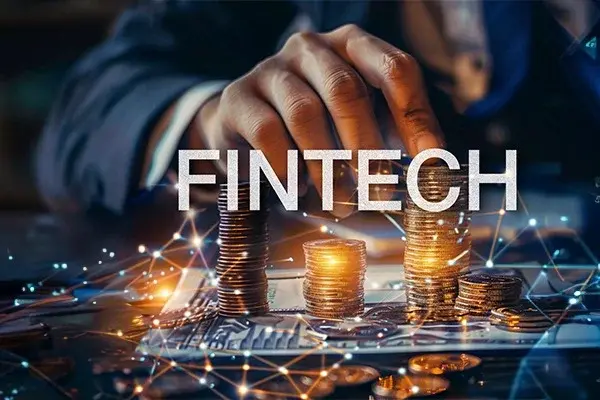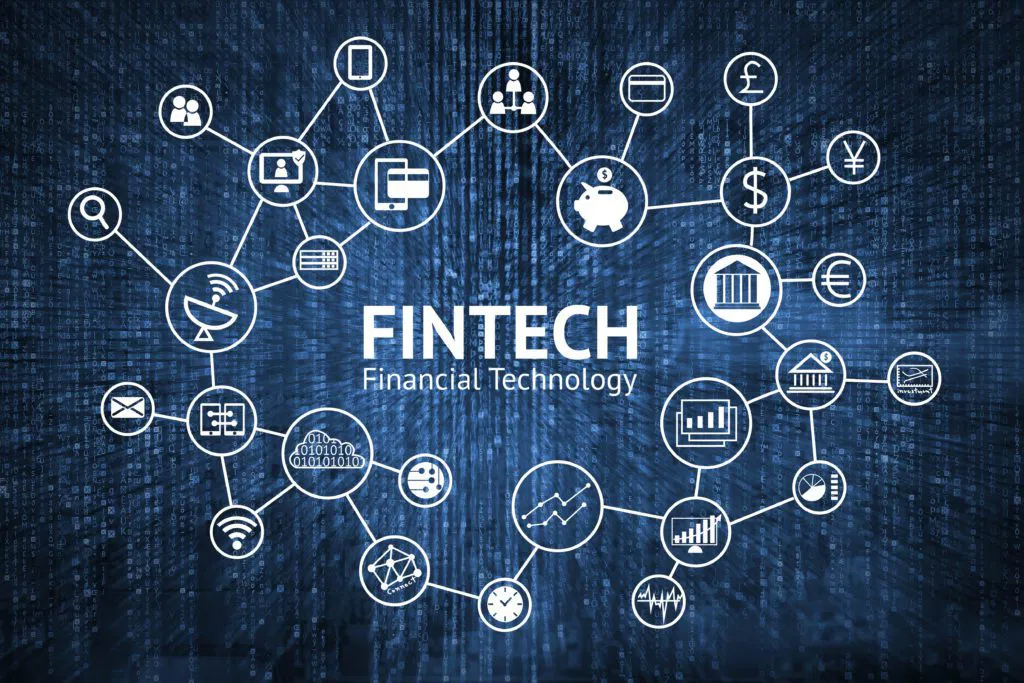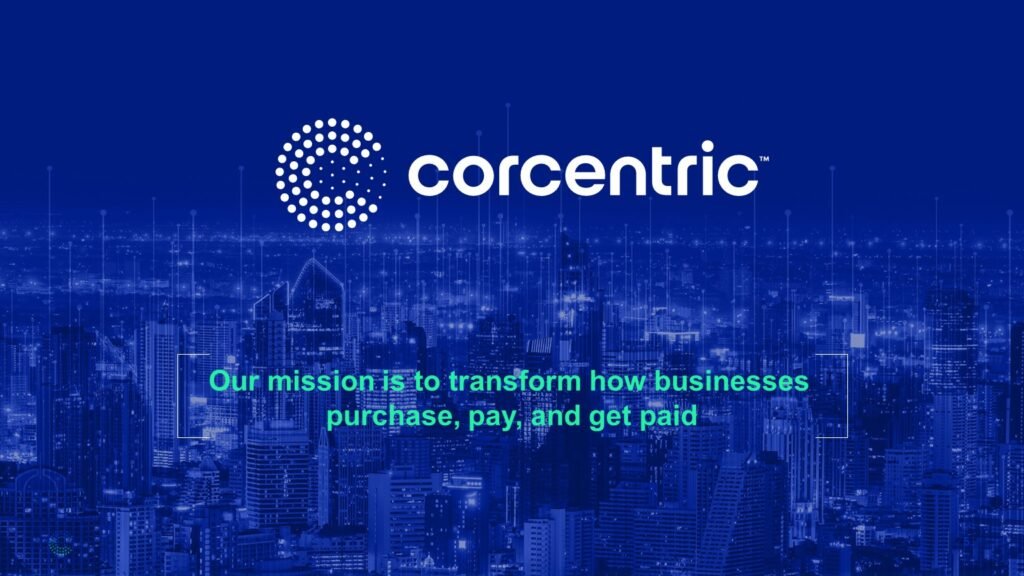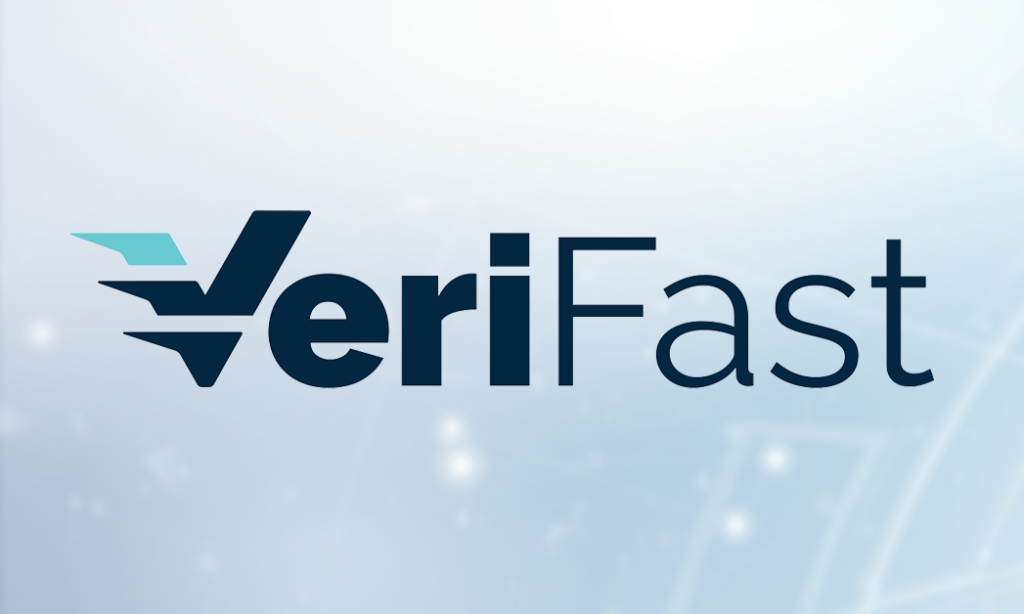Posts by
How Fintech Is Addressing Financial Illiteracy Through Interactive Learning Tools
Financial illiteracy is a pervasive issue affecting millions globally, impacting individuals’ ability to manage money effectively, plan for the future, and make informed financial decisions. As financial technology (fintech) continues to evolve, it is playing a crucial role in combating financial illiteracy by offering innovative and interactive learning tools. These tools are designed to educate users about personal finance, investment strategies, budgeting, and more in engaging and accessible ways. This blog explores how fintech is addressing financial illiteracy through interactive learning tools and their impact on financial education. The Need for Financial Education Financial illiteracy can lead to poor financial decisions, increased debt, and inadequate savings. Traditional financial education methods, such as textbooks and lectures, often fail to engage learners or address their unique financial situations. As a result, there is a growing demand for interactive and personalized educational tools that make financial learning more effective and engaging. Key Interactive Learning Tools Offered by Fintech 1. Gamified Financial Education Apps Description: Gamified apps use game-like elements to make financial education more engaging and fun. These apps often include quizzes, simulations, and rewards to motivate users to learn about financial concepts. Examples: Benefits: 2. Personalized Financial Coaching Description: Fintech platforms offer personalized financial coaching through chatbots, virtual assistants, and human advisors. These tools provide tailored advice based on individual financial goals and behaviors. Examples: Benefits: 3. Interactive Budgeting Tools Description: Interactive budgeting tools help users create and manage budgets through visual interfaces and real-time tracking. These tools often include features like expense categorization, goal setting, and spending alerts. Examples: Benefits: 4. Educational Content and Courses Description: Many fintech platforms provide educational content, including articles, videos, and online courses, to help users learn about various financial topics at their own pace. Examples: Benefits: 5. Interactive Investment Simulators Description: Investment simulators allow users to practice investing without risking real money. These tools provide a virtual environment where users can test strategies and learn about the stock market. Examples: Benefits: Impact of Interactive Learning Tools on Financial Literacy 1. Enhanced Engagement and Motivation Interactive tools make financial education more engaging, leading to higher levels of motivation and participation. Gamified elements and personalized coaching help users stay interested and committed to learning about finance. Example: A user who enjoys a gamified budgeting app is more likely to regularly check and manage their budget compared to traditional methods. 2. Personalized and Relevant Learning Personalized tools offer tailored educational experiences based on individual financial situations and goals. This relevance increases the effectiveness of financial education and helps users apply concepts to their own lives. Example: A personalized financial coach can provide advice specific to a user’s financial situation, leading to more meaningful and actionable insights. 3. Improved Financial Decision-Making Interactive learning tools provide users with practical experience and real-time feedback, improving their ability to make informed financial decisions. By practicing with simulations and budgeting tools, users gain confidence in managing their finances. Example: A user who has practiced investing through a simulator may feel more confident in making real investment decisions. 4. Broader Reach and Accessibility Fintech tools make financial education more accessible to a broader audience. Mobile apps and online platforms can reach individuals who may not have access to traditional financial education resources. Example: A user in a remote area with limited access to financial advisors can benefit from online courses and budgeting apps. Challenges and Considerations 1. Ensuring Accuracy and Reliability It is crucial for fintech platforms to ensure that the information and advice provided through interactive tools are accurate and reliable. Users should be cautious and verify information from reputable sources. Challenge: Misinformation or outdated content could lead to poor financial decisions. 2. Addressing Diverse Needs Interactive learning tools should cater to diverse financial backgrounds and learning styles. Offering a range of educational resources and customization options can help address varying needs. Challenge: Creating content and tools that are relevant and effective for a broad audience. 3. Privacy and Security Fintech platforms must prioritize user privacy and data security, especially when handling sensitive financial information. Ensuring robust security measures helps build trust and protect users. Challenge: Safeguarding user data from breaches and unauthorized access.
Read MoreFintech Innovations in Managing Cryptocurrency Tax Compliance
The rise of cryptocurrency has transformed the financial landscape, offering new opportunities for investment and transactions. However, it has also introduced complexities in tax compliance that can be challenging for individuals and businesses alike. As governments and tax authorities around the world work to address the regulatory landscape for digital assets, fintech innovations are stepping up to streamline cryptocurrency tax compliance. This blog explores how fintech is revolutionizing the management of cryptocurrency tax compliance and highlights key tools and strategies that are making a significant impact. Understanding Cryptocurrency Tax Compliance Challenges Cryptocurrency tax compliance presents unique challenges due to the decentralized and often opaque nature of digital assets. Key issues include: Fintech innovations are addressing these challenges by offering solutions that simplify tracking, reporting, and compliance. Key Fintech Innovations in Cryptocurrency Tax Compliance 1. Automated Tax Reporting Platforms Description: Automated tax reporting platforms use algorithms and data integration to calculate and generate accurate tax reports for cryptocurrency transactions. Examples: Benefits: 2. Real-Time Transaction Tracking Description: Fintech solutions provide real-time tracking of cryptocurrency transactions, allowing users to monitor their portfolio and tax implications continuously. Examples: Benefits: 3. Blockchain-Based Solutions Description: Blockchain technology itself is being leveraged to enhance transparency and accuracy in tax compliance. Examples: Benefits: 4. Advanced Analytics and Machine Learning Description: Advanced analytics and machine learning algorithms are being used to analyze large volumes of transaction data and provide insights into tax implications. Examples: Benefits: 5. Integration with Financial and Tax Planning Tools Description: Fintech solutions are increasingly integrating with broader financial and tax planning tools to offer comprehensive support. Examples: Benefits: Challenges and Considerations 1. Navigating Regulatory Variations Description: Different jurisdictions have varying regulations regarding cryptocurrency taxation, and fintech solutions must adapt to these differences. Challenges: Consideration: 2. Data Privacy and Security Description: Ensuring the privacy and security of sensitive financial and personal data is crucial for fintech solutions. Challenges: Consideration: The Future Outlook The future of fintech in cryptocurrency tax compliance holds exciting possibilities: 1. Enhanced Automation and AI Integration Description: Continued advancements in automation and AI will further streamline tax compliance processes. Trend: Increased use of AI and machine learning to enhance accuracy, predict tax liabilities, and automate complex compliance tasks. 2. Greater Regulatory Integration Description: Fintech solutions will increasingly integrate with regulatory frameworks and tax authorities to facilitate real-time compliance. Trend: Enhanced collaboration between fintech companies and regulatory bodies to ensure seamless compliance and reporting. 3. Expansion of Blockchain Solutions Description: The use of blockchain technology for tax compliance will expand, offering more transparent and efficient solutions. Trend: Growth in the adoption of blockchain-based smart contracts and immutable records for tax reporting and compliance.
Read MoreThe Rise of Green Fintech
As concerns about climate change and environmental sustainability escalate, industries worldwide are seeking innovative ways to reduce their ecological footprints. The financial sector is no exception, and a new wave of technology is emerging to meet these challenges: green fintech. This blog explores the rise of green fintech, its impact on sustainable finance, and how it is reshaping the financial industry to align with environmental goals. What Is Green Fintech? Green fintech refers to financial technology innovations designed to promote environmental sustainability and address climate change. It combines traditional financial services with technologies that support green initiatives, such as reducing carbon emissions, increasing energy efficiency, and promoting sustainable investments. Key Components of Green Fintech: Key Trends and Innovations in Green Fintech 1. Sustainable Investment Platforms Description: Sustainable investment platforms allow investors to direct their funds towards projects and companies that prioritize environmental and social governance (ESG) criteria. Examples: Impact: 2. Green Banking Solutions Description: Green banking solutions integrate sustainability into traditional banking services, encouraging environmentally responsible behavior among consumers. Examples: Impact: 3. Climate Risk Assessment Tools Description: Climate risk assessment tools help financial institutions evaluate and manage risks associated with climate change, including physical risks (e.g., extreme weather) and transition risks (e.g., policy changes). Examples: Impact: 4. Green Digital Payment Solutions Description: Green digital payment solutions focus on reducing the environmental impact of payment systems and promoting sustainability in transactions. Examples: Impact: Challenges and Considerations 1. Integration and Adoption Description: Integrating green fintech solutions into existing financial systems and encouraging widespread adoption can be challenging. Challenges: Consideration: 2. Data Privacy and Security Description: The implementation of green fintech solutions involves handling sensitive financial data, raising concerns about privacy and security. Challenges: Consideration: 3. Measuring Impact and Effectiveness Description: Evaluating the impact and effectiveness of green fintech solutions in achieving sustainability goals can be challenging. Challenges: Consideration: The Future Outlook The future of green fintech is promising, with several trends likely to shape its development: 1. Growth of Sustainable Investment Description: Sustainable investment will continue to grow as investors increasingly seek to align their portfolios with environmental and social goals. Trend: The expansion of sustainable investment platforms and products will drive capital towards green projects and initiatives. 2. Integration of AI and Big Data Description: AI and big data analytics will play a significant role in enhancing green fintech solutions by providing insights and optimizing decision-making. Trend: The use of AI and data analytics will improve climate risk assessment, investment strategies, and sustainability reporting. 3. Regulatory and Policy Developments Description: Governments and regulatory bodies will likely introduce new policies and regulations to support green fintech and promote sustainability. Trend: Evolving regulations and incentives will encourage the adoption of green fintech solutions and drive innovation in the sector.
Read MoreThe Future of Financial Privacy
Financial privacy is a cornerstone of individual autonomy and trust in the financial system. As technology advances and financial transactions become increasingly digital, the concept of financial privacy is evolving, facing both new opportunities and challenges. This blog explores the future of financial privacy, examining emerging technologies, regulatory trends, and best practices for protecting personal financial information. The Current State of Financial Privacy Financial privacy concerns the protection of individuals’ financial information from unauthorized access and misuse. Traditionally, privacy was maintained through physical security measures and manual processes. However, with the rise of digital banking, online transactions, and data analytics, maintaining financial privacy has become more complex. Key Aspects of Current Financial Privacy: Emerging Technologies Impacting Financial Privacy 1. Advanced Encryption Techniques Description: Encryption is the process of encoding data to prevent unauthorized access. Advanced encryption techniques are crucial for securing financial transactions and protecting sensitive information. Technological Advances: Future Impact: 2. Blockchain Technology Description: Blockchain is a decentralized ledger technology that records transactions across a network of computers. It offers transparency and security, which can enhance financial privacy in several ways. Applications in Financial Privacy: Future Impact: 3. Artificial Intelligence and Machine Learning Description: AI and machine learning can analyze vast amounts of data to detect patterns and anomalies. While this technology offers many benefits, it also presents challenges for financial privacy. Applications in Financial Privacy: Future Impact: 4. Privacy-Enhancing Technologies (PETs) Description: PETs are designed to protect data privacy by minimizing the amount of personal information collected and ensuring that data is handled securely. Examples of PETs: Future Impact: Regulatory Trends and Challenges 1. Evolving Data Protection Laws Description: Data protection laws are continually evolving to address new privacy challenges. Regulations like the General Data Protection Regulation (GDPR) and the California Consumer Privacy Act (CCPA) set standards for data protection and privacy. Future Developments: Challenges: 2. Balancing Privacy and Innovation Description: As technology advances, there is a need to balance privacy with innovation and convenience. Emerging technologies often require access to personal data, raising concerns about privacy. Future Developments: Challenges: Best Practices for Enhancing Financial Privacy 1. Implementing Strong Security Measures Description: Financial institutions and individuals should adopt robust security measures to protect sensitive data. Best Practices: 2. Educating Consumers Description: Educating consumers about financial privacy and security is essential for protecting personal information. Best Practices: 3. Embracing Privacy-Enhancing Technologies Description: Leverage privacy-enhancing technologies to safeguard personal information and ensure secure transactions. Best Practices:
Read MoreThe Impact of IoT on Financial Services
The Internet of Things (IoT) refers to the network of interconnected devices that communicate and share data through the internet. From smart home devices to wearable technology, IoT has become an integral part of modern life, influencing various industries, including financial services. In the financial sector, IoT is driving innovation and transforming how institutions operate, manage risk, and interact with customers. This blog explores the impact of IoT on financial services, highlighting key applications, benefits, and potential challenges. Understanding IoT in Financial Services IoT in financial services involves integrating connected devices and sensors with financial systems and processes. These devices collect and transmit data that can be analyzed to improve decision-making, enhance customer experiences, and optimize operations. The application of IoT technology in finance extends from risk management and fraud detection to personalized services and operational efficiency. Key Applications of IoT in Financial Services 1. Enhanced Risk Management Description: IoT devices provide real-time data that can be used to assess and manage various types of risk, including operational, market, and credit risk. Applications: Example: An insurance company uses telematics data from connected cars to assess driving behavior and adjust premiums based on individual risk profiles. Benefits: 2. Fraud Detection and Prevention Description: IoT devices can enhance fraud detection by providing additional layers of data and context that help identify suspicious activities. Applications: Example: A bank uses IoT-based sensors and biometric authentication to verify user identities and detect unusual transaction patterns. Benefits: 3. Personalized Financial Services Description: IoT enables financial institutions to offer personalized services by leveraging data from connected devices to tailor products and interactions. Applications: Example: A financial app integrates with a user’s smart home system to provide personalized budgeting advice based on their utility usage and spending patterns. Benefits: 4. Operational Efficiency Description: IoT technology helps financial institutions optimize their operations by automating processes and improving resource management. Applications: Example: A bank uses IoT sensors to monitor the performance of ATMs, ensuring timely maintenance and reducing downtime. Benefits: 5. Enhanced Customer Engagement Description: IoT enhances customer engagement by providing financial institutions with additional touchpoints and communication channels. Applications: Example: A bank offers a mobile app that integrates with wearable devices to provide real-time notifications and financial insights based on user activity. Benefits: Challenges and Considerations 1. Data Privacy and Security Description: The integration of IoT devices raises concerns about data privacy and security, as sensitive financial information is transmitted and stored. Challenges: Consideration: Implementing robust security measures, such as encryption and access controls, is essential for protecting data and maintaining compliance. 2. Integration and Interoperability Description: Integrating IoT devices with existing financial systems and ensuring interoperability can be complex and challenging. Challenges: Consideration: Financial institutions should prioritize interoperability and work with technology providers to ensure seamless integration. 3. Data Management and Analysis Description: Managing and analyzing the large volumes of data generated by IoT devices can be overwhelming and require significant resources. Challenges: Consideration: Investing in data analytics tools and platforms can help manage and extract valuable insights from IoT data. The Future Outlook The impact of IoT on financial services is set to grow as technology continues to evolve. Key trends to watch include: 1. Expansion of IoT Applications Description: IoT applications in financial services are expected to expand, with new use cases and innovations emerging. Trend: Financial institutions will explore new ways to leverage IoT for enhanced risk management, personalized services, and operational efficiency. 2. Advancements in IoT Security Description: As IoT adoption increases, there will be a focus on improving security measures to protect against data breaches and cyber threats. Trend: Advances in IoT security technologies, such as encryption and authentication, will enhance data protection and privacy. 3. Increased Regulatory Focus Description: Regulators will likely introduce new guidelines and standards for IoT use in financial services to address privacy, security, and data management concerns. Trend: Financial institutions will need to stay informed about regulatory developments and ensure compliance with evolving standards.
Read MoreHow AI-Powered Portfolio Management Is Changing Investment Strategies
The realm of investment management is experiencing a profound transformation, driven by the integration of artificial intelligence (AI) technologies. AI-powered portfolio management is redefining investment strategies, offering unprecedented levels of efficiency, precision, and personalization. This blog explores how AI is reshaping portfolio management, the benefits it brings, and the future implications for investors and financial professionals. What Is AI-Powered Portfolio Management? AI-powered portfolio management utilizes advanced artificial intelligence algorithms and machine learning techniques to optimize investment strategies and manage portfolios. By analyzing vast amounts of data, AI systems can provide insights and make recommendations that traditional methods may not uncover. Key Components: How AI Is Transforming Investment Strategies 1. Enhanced Data Analysis and Insights Description: AI enhances the ability to analyze large volumes of data from diverse sources, including financial statements, market data, news articles, and social media. Applications: Benefits: 2. Personalized Investment Strategies Description: AI enables the creation of highly personalized investment strategies tailored to individual investor preferences, risk tolerance, and financial goals. Applications: Benefits: 3. Risk Management and Optimization Description: AI improves risk management by identifying potential risks and optimizing portfolio allocations to minimize exposure. Applications: Benefits: 4. Automated Trading and Execution Description: AI automates trading and execution processes, allowing for faster and more efficient transactions. Applications: Benefits: 5. Enhanced Portfolio Monitoring and Rebalancing Description: AI improves portfolio monitoring and rebalancing by continuously analyzing performance and making adjustments as needed. Applications: Benefits: Challenges and Considerations 1. Data Quality and Integrity Description: The effectiveness of AI-powered portfolio management relies on the quality and integrity of the data used. Challenges: Consideration: 2. Ethical and Regulatory Issues Description: The use of AI in portfolio management raises ethical and regulatory concerns, including transparency and accountability. Challenges: Consideration: 3. Dependence on Technology Description: Increased reliance on AI technology may introduce risks related to system failures and cybersecurity. Challenges: Consideration: The Future Outlook The future of AI-powered portfolio management is promising, with several trends likely to shape its development: 1. Integration of Advanced AI Techniques Description: Future advancements in AI, such as deep learning and advanced neural networks, will enhance portfolio management capabilities. Trend: The integration of cutting-edge AI techniques will lead to more accurate predictions, improved risk management, and personalized strategies. 2. Growing Adoption of AI by Financial Institutions Description: Financial institutions are increasingly adopting AI technologies to stay competitive and meet evolving investor needs. Trend: The widespread adoption of AI will drive innovation in portfolio management and enhance the overall efficiency of financial services. 3. Increased Focus on Ethical and Responsible AI Description: As AI becomes more prevalent, there will be a growing emphasis on ethical considerations and responsible AI use. Trend: Financial institutions will prioritize transparency, accountability, and compliance with ethical standards in AI-driven portfolio management.
Read MoreTFSF Ventures Unveils Cutting-Edge Software Solutions to Empower Fintech Companies
Date – 2 January 2025 TFSF Ventures introduces cutting-edge software designed to drive growth, optimize operations, and empower fintech firms to navigate the rapidly changing financial landscape. TFSF Ventures, a leading fintech software innovator based in Dubai, has proudly unveiled a comprehensive suite of software solutions designed to accelerate growth for both emerging startups and established fintech firms. These cutting-edge tools are crafted to enhance financial products, optimize operational efficiency, and enable seamless global payment program issuance. This launch reaffirms TFSF Ventures’ commitment to equipping fintech companies with the resources they need to navigate the rapidly evolving financial landscape with confidence and agility. The new solutions will not only help businesses stay ahead of industry trends but also empower them to deliver exceptional value to their customers, ensuring sustained success in a competitive market. Empowering Fintech Startups TFSF Ventures introduces a dynamic range of innovative software solutions tailored specifically for new entrants in the fast-paced fintech sector. Acknowledging the challenges startups face, TFSF provides robust tools for product development, regulatory compliance, and customer management, essential for establishing a strong market presence.“Breaking into the fintech space can be daunting, with complex regulations and the need for quick market adaptation,” said a spokesperson for TFSF Ventures. “Our software equips startups with the critical resources to launch financial products swiftly and maintain global compliance, ensuring they remain competitive.” The solutions include digital wallets for seamless transactions and advanced lending platforms for quick credit assessments and approvals. Each offering is designed to give startups a competitive edge, allowing them to meet consumer demands and innovate within the industry. With TFSF Ventures as a partner, startups can confidently navigate the complexities of fintech and unlock their full potential. Driving Growth for Established Fintech Firms For established fintech companies seeking to scale their operations, TFSF Ventures offers a unique opportunity to expand service offerings. With a focus on program issuance and new revenue streams, TFSF’s technology supports the diversification of financial products across multiple jurisdictions. “We support both startups and established firms in optimizing their operations. Our solutions streamline global payment program launches, enabling services like virtual cards and cross-border transactions,” the spokesperson added. TFSF’s end-to-end software integrates seamlessly with existing infrastructures, providing scalability and flexibility to meet the demands of the evolving fintech landscape. With capabilities to manage international regulations and serve diverse client bases, TFSF Ventures’ solutions are vital for companies aiming for global expansion. Expanding Revenue Opportunities TFSF Ventures empowers fintech companies to diversify their revenue streams by introducing high-margin services such as global payment issuance and innovative cross-border financial products. Expanding service offerings allows companies to enter new markets and meet the evolving needs of their customers. This strategic approach not only enhances customer loyalty by delivering added value but also provides fintech firms with a competitive edge in a crowded marketplace. As the financial industry continues to evolve, adapting and expanding service portfolios will be key to long-term success. Global Solutions with Local Expertise Leveraging its position within Dubai’s vibrant fintech ecosystem, TFSF Ventures offers innovative global solutions backed by invaluable local expertise. Dubai’s status as a leading financial hub, with its cutting-edge infrastructure and business-friendly environment, gives TFSF Ventures a strategic advantage in offering fintech companies access to international markets. This is crucial for businesses aiming to expand their global footprint. Furthermore, TFSF’s commitment to compliance with local regulations ensures effective navigation of market complexities. “With our extensive network and deep understanding of regional dynamics, we help fintech innovators not only meet regulatory standards but also seize growth and collaboration opportunities,” the spokesperson concluded.
Read MorePapaya Ltd. Names Renowned Czech Financial and Management Expert as CEO
Date – 2 January 2025 Papaya Ltd., an Electronic Money Institution specializing in innovative financial solutions, is delighted to announce the appointment of Igor Tsybolyuk as its new Chief Executive Officer (CEO), effective immediately. Igor’s extensive experience in financial services for small and medium-sized enterprises across Europe and the UK makes him an invaluable asset to the Papaya team. Since joining Papaya Ltd. in June 2022 as Chief Operating Officer (COO), Igor Tsybolyuk has been instrumental in driving the company’s growth and stability. He has successfully implemented business strategies, set ambitious performance goals, and managed daily operations. His deep expertise in regulatory compliance and strategic planning, coupled with his experience working with regulators, makes him ideally suited to lead Papaya Ltd. into its next phase of development. “We are thrilled to have Igor Tsybolyuk assume the role of CEO,” said Dmitrijs Panurskis, Chairman of the Board and Owner of Papaya Ltd. “His proven leadership and comprehensive understanding of the financial industry will be pivotal in advancing our mission to deliver best-in-class financial capabilities to our clients.” Upon accepting the role, Igor Tsybolyuk stated, “I am honored to lead Papaya Ltd. during such a dynamic period in the fintech industry. We are dedicated to rapidly advancing our financial technologies while maintaining a strong focus on our customers. Our mission is to provide exceptional financial services to European consumers and businesses, including underserved segments, ensuring inclusivity and accessibility for all. We will also continue our close collaboration with regulators to uphold the highest standards of compliance and transparency.” Igor’s previous roles include CEO positions at Talentoom Ltd. and Fin Communications s.r.o., where he focused on business development, compliance, and financial management. His extensive background in financial services and his commitment to regulatory collaboration will drive Papaya Ltd.’s strategic objectives and secure its ongoing success. Papaya Ltd. remains committed to pioneering innovative financial solutions and enhancing the financial well-being of its clients. With Igor Tsybolyuk at the helm, the company is positioned for significant growth and continued excellence in the fintech sector.
Read MoreCorcentric has named Manoj Narayan as Senior Vice President of Order-to-Cash, Payments, and Data Product Management.
Date – 20-Aug-2024 Corcentric, a leading global provider of advanced procurement and finance solutions, has announced the appointment of Manoj Narayan as Senior Vice President of Product Management. In this role, Narayan will oversee Corcentric’s Order-to-Cash (O2C), Payments, and Data products. Narayan will also spearhead the development of Corcentric’s next-generation application development platform, aimed at accelerating the unification of the company’s product portfolio. This new platform will support the creation of innovative network-centric B2B applications designed to enhance buyer-supplier collaboration. He will report to Sudarshan (Suds) Ranganath, Senior Vice President of Product Management at Corcentric. “Manoj brings extensive experience in launching transformative B2B procurement and fintech applications,” said Manish Jaiswal, Chief Product and Technology Officer at Corcentric. “His impressive track record of leading product teams to drive substantial growth in both product offerings and revenue makes him a valuable addition to our team.” With over 20 years of experience in product management for SaaS and cloud applications, Narayan previously served as Senior Vice President of Product at BlackLine, where he led teams in product management, solutions management, product design, and documentation. Before that, he was Global Vice President of Product Management at SAP Ariba, overseeing product teams for the Ariba Network, Cloud Integration Gateway, and Ariba Platform. His career also includes senior roles at PricewaterhouseCoopers and TradeBeam, as well as experience as an M&A advisor. Narayan is a certified public accountant (CPA), chartered accountant (CA), and holds a bachelor’s degree in commerce from Mumbai University. “I am excited to join Corcentric and contribute to the next innovative phase of our product suite,” said Narayan. “My goal is to push the boundaries of digital technology to deliver the most user-friendly and comprehensive solutions for procurement and finance organizations.” Corcentric’s O2C solutions are designed to reduce days sales outstanding (DSO) by ensuring timely payments and mitigating credit risk, leading to improved working capital, enhanced customer service, and better cash flow. Additionally, Corcentric’s Payment solutions optimize processes through innovative platforms, personalized support, and continuous improvement, benefiting not only the finance department but also strengthening supplier and customer relationships, reducing fraudulent payments, and boosting overall organizational efficiency.
Read MoreVeriFast is growing its leadership team.
Date – 20-Aug-2024 Verification-as-a-Service platform makes a strategic addition to its sales team and promotes experts in multifamily fraud and property management. VeriFast, the AI-powered verification-as-a-service platform specializing in financial analysis and decision-making for resident screening, mortgage underwriting, and consumer lending, has announced several key executive changes to further its growth and enhance its role as a vital partner for landlords aiming to reduce delinquency and boost occupancy. Bob Hansen, a seasoned property manager and proptech expert, is joining VeriFast as Vice President of Sales. Most recently, Hansen was a principal at Second Nature, a company offering a comprehensive resident benefits platform. Prior to that, he served as Senior Vice President at Home Partners of America and spent a decade at Apartments.com, where he led the western region and launched rentalhomesplus.com, targeting the single-family home market. At VeriFast, Hansen will drive expansion in the midwestern multifamily sector and the national single-family leasing industry. “We are excited to welcome Bob to our team,” said Tim Ray, Founder and CEO of VeriFast. “His extensive experience in both sales and property management will be invaluable in engaging with our customers and strengthening our presence in the proptech sector.” In addition to hiring Hansen, VeriFast has promoted Jeanne Klein from Vice President of Sales to Senior Vice President of Sales and Becca Stafford to Vice President of Operations. Klein, an expert in multifamily housing fraud, frequently speaks and writes on the subject. Before joining VeriFast, she was National Director of Sales for Lobby CRE and Director of Sales for Parking Boss. Klein’s extensive background in property management includes over a decade with Greystar, The Altman Company, FCI Residential, and ZRS Management. “Jeanne is a prominent thought leader whose insights into multifamily fraud have been crucial to our platform’s development,” Ray said. “Her contributions have significantly driven our growth.” Stafford, with more than a decade of experience in property management and real estate accounting, will oversee VeriFast’s AI-driven property management and lending products as Vice President of Operations. “Becca’s dedication to helping property managers and operators optimize their NOI through data analytics has been exceptional,” Ray noted. “Her deep understanding of customer needs and her support in implementing our solutions have been pivotal in reducing delinquencies and maintaining high occupancy rates.”
Read More








